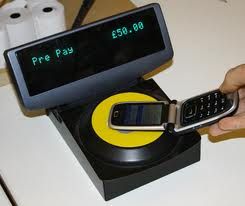Contactless Payments Arrive On London Buses

Good news for London commuters after contactless payment systems arrive on buses
Transport for London (TfL) has launched its contactless payments system for London commuters using the capital’s famous red buses.
TfL said the contactless payments, delivered over NFC (near field communication), would now allow commuters to use their NFC-enabled devices or cards.
Contactless payments
It should be noted that the contactless payment system utilises the existing yellow card reader that the commuter sees when boarding the bus. This reader has been traditionally been used to accept Oyster cards on the buses, but has now been upgraded to include NFC payment systems.
 However, TfL warned travellers not to store both their Oyster card and contactless payment card or device in the same wallet, purse or ticket holder, because the system has been designed to reject these if they are presented together. This is because TfL would not be able to determine which contactless payment system to correctly debit.
However, TfL warned travellers not to store both their Oyster card and contactless payment card or device in the same wallet, purse or ticket holder, because the system has been designed to reject these if they are presented together. This is because TfL would not be able to determine which contactless payment system to correctly debit.
“If you don’t (touch the correct card) there is a small possibility that payment will be taken from a card that you did not intend using,” warned TfL.
Many Londoners will be used to contactless systems thanks to the Oyster card, which has been in operation since 2003. The Oyster card however uses RFID (radio-frequency identification) technology, rather than NFC technology.
As of June 2012, over 43 million Oyster cards had been issued and more than 80 percent of all journeys on public transport in London are apparently made using the card.
NFC chips meanwhile have increasingly been bundled into next generation mobile phones. Samsung even provides NFC-enabled TecTile stickers or labels, to allow mobile phone users to switch to different modes, such as home mode, or car mode, by touching their device to the relevant sticker or label.
Rising adoption
The technology has been catching on quickly after its adoption by many payment companies, mobile operators and banks.
Barclaycard, in April, gave an NFC option to users of older mobile phones that do not have an NFC chip embedded in it. The Barclaycard PayTag label is an NFC label designed to be stuck to the back of a mobile phone. It will let Barclaycard customers make NFC micropayments, without the need to upgrade to the latest smartphone.
Yet concerns remain over the security issues associated with NFC.
In March, a Channel 4 investigation warned that up to 13 million users of Barclays’ contactless debit and credit cards could be defrauded using NFC-enabled smartphones. That investigation found smartphones integrated with NFC technology could be adapted to collect sensitive data from cards with just a quick swipe.
And in July security researcher Charlie Miller found flaws in NFC security that could allow hackers to beam code over to Android and Nokia devices to carry out attacks.
How much do you know about online piracy? Try our quiz.